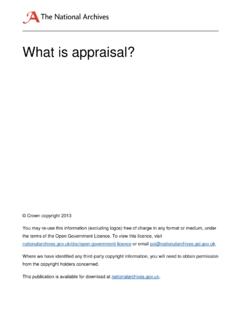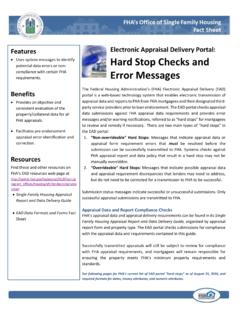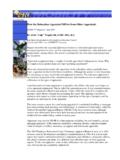Transcription of Australian standards for editing practice
1 Australian standards for editing practiceSecond editionInstitute of Professional Editors LimitedFirst published 2001 by Council of Australian Societies of Editors (CASE) Council of Australian Societies of Editors 2001 Second edition published 2013 byInstitute of Professional Editors Limited (IPEd) Institute of Professional Editors Limited 2013 Design and layout by Graham Abraham DesignPrinted in Australia by Eureka Printing Pty LtdThe standards are available from the organisations of Professional Editors Limited (IPEd)PO Box 6585, Point Cook Vic member societiesCanberra Society of Editors Inc., PO Box 3222, Manuka ACT Victoria, PO Box 176, Carlton South Vic Society of Editors (New South Wales) Inc., PO Box 254, Broadway NSW of Editors (Queensland) Inc., PO Box 1524, Toowong Qld of Editors (South Australia) Inc., PO Box 2328, Kent Town SA of Editors (Tasmania) Inc., PO Box 4512, Bathurst St PO, Hobart Tas of Editors (Western Australia) Inc., PO Box 99, Subiaco WA have able wordsmiths the minders, or keepers, of language been more needed.
2 Communication has become more abundant, more widespread, faster and more deeply ingrained in our lives. Access to an array of media is wider than it has ever been, and ideas and language innovations are burgeoning. Sometimes, though, ideas are marred by the speed and ease in which they can be delivered, leading to miscommunication, a lack of clarity and a lack of elegance. Editors are correspondingly more indispensable. Working within this realm, they need solid grounding, logical thinking and a breadth of understanding of how published language and communication work. And they need a functional grasp of an increasing range of subject second edition of Australian standards for editing practice , published by the Institute of Professional Editors Limited (IPEd), the peak body for Australian editors and societies of editors, gives a solid frame to the range of knowledge and skills that competent editors possess. It includes the understanding of new technology and the flexibility to embrace new media, new rules and new language, among the many other factors that enhance clear has done a fine job in reviewing the original edition to produce a timely and well-crafted document to guide new and experienced editors, their educators and their clients.
3 This book brings together a special wisdom and care for our language especially as it is used in Australia combined with experience of working with Australian English in the professional domain. Our language has moved on since the first edition. We need a reference work that is up to date. As with the first edition, published in 2001, the second results from the teamwork of many Australian editors, to whom their colleagues are deeply indebted. Capably led by Kerry Davies AE, editors from all of IPEd s member societies worked for more than a year to revise, review and refine the standards . Others contributed to meetings and discussions about the revision in their local societies. These editors generously gave time and effort to the project; they brought their intelligence and negotiating skills to the task. Writers and readers, and the editors whose work benefits both those groups, are in their Professor Roland Sussex OAMP atron, Institute of Professional Editors Limited February 2013D.
4 Language and illustrations 13D1 Clarity 13D2 Voice and tone 14D3 Grammar and usage 14D4 Spelling and punctuation 15D5 Specialised material 15D6 Illustrations 16E. Completeness and consistency 17E1 Integrity 17E2 Textual elements 18E3 Illustrations 19E4 Format, layout and production 19 Glossary 20 Revision history 24 Acknowledgements 24 ContentsPreface viThe fundamentals of editing viiiThe role of editors ixA. Professional practice 1A1 Professional knowledge and conduct 1A2 Communication 2A3 The publishing process 3A4 Legal and ethical matters 4A5 Design, typography and formatting 5A6 Tools and software for editing practice 6A7 Printing and replication processes 7B. Management and liaison 8B1 Project definition 8B2 Project documentation 9B3 Monitoring 10C. Substance and structure 11C1 Appraisal 11C2 Structural devices 12 PrefaceAustralian standards for editing practice sets out the core standards that professional editors should meet and tells employers what to expect from the editors they hire.
5 It shows new editors the range of skills and knowledge they should aspire to. It helps the Institute of Professional Editors (IPEd), educational institutions and other training providers to devise material, seminars and courses on editing . And it is the foundation for IPEd s national accreditation of editors. Australian standards for editing practice does not attempt to capture the full array of knowledge, skills, best practice , sequential tasks and responsibilities required by all editors on all projects in all settings. However, professional editors should meet certain core standards . The term standard is used here to mean anything taken by general consent as a basis of comparison; an approved model (Macquarie dictionary). Australian standards for editing practice does not attempt to codify the quality of editors work how well a particular task has been performed. Rather, it aims to set out the knowledge and skills needed for editing practice , those that experienced editors routinely use in their viiThe standards in this document are divided into five parts:A.
6 Professional practiceB. Management and liaisonC. Substance and structureD. Language and illustrationsE. Completeness and standards set out in Part A underpin those in Parts B to E. Editors who meet the standards given in this document are able to do a professional job with a minimum of document is genre neutral; that is, it describes the knowledge and skills required of editors regardless of the type of material they work on or the organisational context they work in. Australian standards for editing practice recognises the most recent version of the Style manual for authors, editors and printers as the standard Australian editorial Australian standards for editing practice , second editionThe role of editors ixThe fundamentals of editingEditing involves carefully reviewing material before it is published, and suggesting or making changes to correct and improve it. Three aspects, or levels, of editing are generally recognised substantive editing , copyediting and proofreading.
7 Substantive editing (including, and sometimes called, structural editing ) is assessing and shaping material to improve its organisation and content. It is editing to clarify meaning, improve flow and smooth language. Copyediting is editing to ensure consistency, accuracy and completeness. Proofreading is examining material after layout to correct errors in textual and visual practice , not all editors work on all of these aspects, and not all publications go through them all. Further, some overlap is inevitable. The exact editorial process followed for a given publication varies, depending on factors such as the quality of the original material, the intended audience and purpose, set practices within an organisation, production methods and tools, schedule and standards for editing practice emphasises the place of editors work in the context of the entire publishing process. The practice of editing is not confined to working with specific written materials in isolation.
8 For example, an editor s capabilities may extend to project management, using the same skill set needed in managing any job and dealing with the other people involved. Although editors generally do not need the design and layout abilities of a desktop publisher, they need to understand what a desktop publisher can role of editorsEditors are central to any publishing project; they endeavour to reconcile the needs of the author, the audience and the publisher. Editors are part of a team that guides a work through its various stages from creation to publication. All editors need to have a broad understanding of the publishing process and their role within it, regardless of the extent of their involvement. They should demonstrate initiative and flexibility, adapting to the needs of a project and the specific work environment. They need to communicate clearly and tactfully, and to respect the opinions of others. Editors work with many different subjects and many types of publication (novels, reports, websites, magazines, textbooks and scientific materials, to name a few) that require specialised knowledge and skills.
9 Editors also work in many different contexts, from book editing for traditional publishing houses to advising on communication strategies in government and corporate sectors. Some editors perform tasks that extend beyond editing , such as project management, design, indexing and website maintenance. The goal of editors, regardless of their role or the type of publication, is to ensure that the material is consistent and correct, and that its content, language, style and layout suit its purpose and meet the needs of its audience. viii Australian standards for editing practice , second editionA. Professional practiceEditors are part of a larger publishing process; they understand the stages of that process and the standard practices of the publishing industry, whether for printed or onscreen Professional knowledge and conductRegardless of their role in the publishing process or the organisational context, editors need to understand the Steps in the publishing process, the relationship between them and their effect on the final publication.
10 Includes publication planning, budgeting, editing , designing, formatting or typesetting, proofreading, navigation, indexing, print production (such as production checking, binding and distribution), online procedures (such as programming, testing, site maintenance and uploading or replication) and Different types of publication, their purpose and audience, and the editing and production choices that these imply. Includes implications for accessibility, cost, scheduling, production, marketing and delivery modes. Components of a publication appropriate to the delivery medium, which may include preliminary matter, body, and end The need to balance time, cost and quality to suit the purpose of a publication, and the effect of choices in any of these on the final product. Professional ethics. Includes objectivity, confidentiality, conflict of interest and implications for editing academic material such as theses. (When editing a thesis, comply with the IPEd Guidelines for editing research theses , available at ) A.






